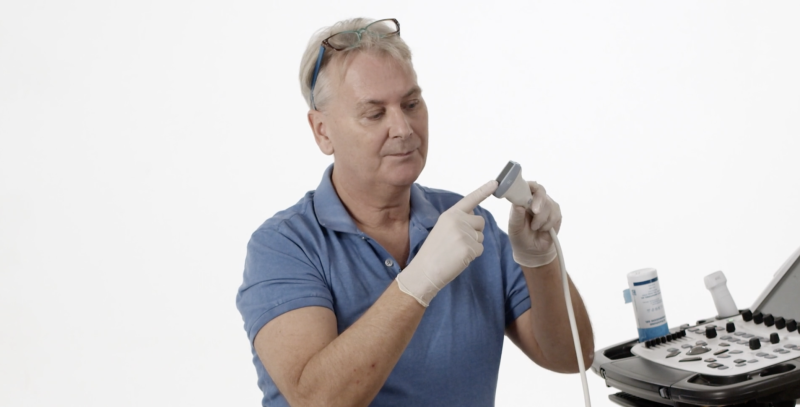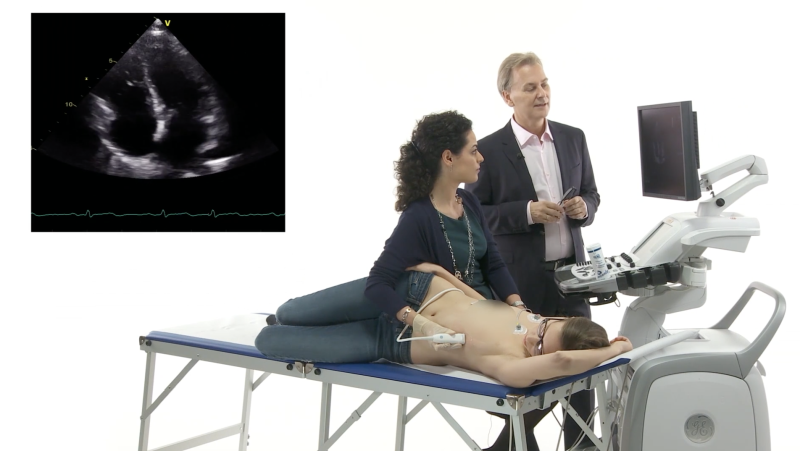Lindarella and the Wicked Malady
Do you remember when we were children and our parents used to tell us stories before going to sleep - tales of princesses and knights fighting against evil witches and three-headed monsters? We would listen to the same story over and over again, with the same excitement, the desire to skip the sad part of the story, and reach the happy ending as soon as possible. The clinical case I am going to tell you about here is somewhat like a Grimms' fairy tale. Although we're no longer kids, I am sure the story will thrill you and touch you. So lie back and listen to a fairy tale as if you were a kid.
Once upon a time…
… a beautiful princess named Lindarella was born in a small town in Northern Italy. Her skin was white as snow and her lips were red as blood. As a child she liked swimming, walking in the woods, and picking blackberries with her friends. Everybody loved her except Malady, the wicked and ugly witch. The years went by. Lindarella grew into a lovely young lady, happy with her life. However, Malady kept watching her from afar and was busy preparing a poisonous spell to spoil her beauty.
The sad part of the story
At the age of 34 Lindarella fell ill. She stopped swimming because she felt weaker. After a few months any effort would cause her shortness of breath, so she avoided going out with friends. The smartest doctors in town were summoned to the royal palace: Lindarella’s heart was beating fast: her heart rate at rest was 95 bpm, and her blood pressure was 100/70 mmHg. Moreover, the pulmonary component of the second heart sound was accentuated and a pansystolic murmur was found near the sternum. Her legs were swollen. The ECG showed huge P waves and ST-segment depression in V1-V3. Her BNP was 1500 pg/dl. Experts in the field of echocardiography gathered in town. After several exams, including a right heart catheterization, the diagnosis was established: idiopathic pulmonary arterial hypertension (iPAH).
Wicked Malady took control of the princess’s life
Although the princess had started to take specific drugs to dilate the pulmonary vascular system, such as phosphodiesterase 5 (PDE5) inhibitors (sildenafil, 120mg/die) and endothelin receptor antagonists (ERA) (ambrisentan, 10mg/die), Malady was gaining ground. The disease was progressing. Less than one year after the diagnosis of iPAH, the princess was put on the list for lung transplantation (LT). Her heart was filled with sadness and fear.
A glimmer of light
It took Lindarella five long years to receive a phone call from a big Austrian hospital. It was the answer to her prayers: a compatible donor had been found and his lungs were being explanted. All she had to do was travel to Austria and get ready for the transplantation. At that time Lindarella was very weak. She had lost weight, her hands were cold, and her lips were no longer red but almost bluish. Look at her heart a few hours before the lung transplantation.
Apical four-chamber view.
Enlarged RV with hypertrophic moderator band.
When you perform an echo and your standard views look like this, your first thought will be, “This is a right heart problem.” Let’s start our analysis by looking at the right ventricle (RV). It is very large and also forms the apex. Lindarella seems to have an “inverted” heart, with the right chambers much larger than the left ones.
Parasternal short-axis view. Compression on the LV.
The parasternal short-axis view clearly shows that the LV has lost its normal near-spherical shape; it is now "D-shaped" The septum is pushed to the left, and flattened during systole. Such prominent septal flattening is usually associated with severely elevated RV pressures, which seriously interfere with LV morphology and function. Now let me ask you a simple question: Is acute or chronic pressure overload responsible for RV enlargement? To answer this, look for signs of RV hemodynamic adaptation, such as hypertrophy. In addition to thickened walls of the RV (>5mm), the moderator band is also very prominent and hypertrophic. This indicates chronic pressure overload. How would you estimate right ventricular function? It is certainly reduced - as it always is in the presence of severe pulmonary hypertension. The main question is: does the right ventricle have the potential to recover? Read on and you will find out.The findings clearly showed that Linderella has severe pulmonary hypertension. How high is her pressure? Extremely high! We calculated an sPAP of 160 mmHg. Does this reflect poor prognosis? Certainly the degree of pulmonary hypertension correlates with the prognosis. However, in my opinion it is of little help in patients such as Linderella who are already in the high-risk group. It only tells me that the right ventricle still has the potential to pump against very high resistance - which is actually a relatively good sign.
Apical 4-chamber view with color Doppler showing severe TR.

Peak velocity of the tricuspid valve regurgitant jet (6 m/sec).
The good triumphs at last
A few hours after the echo was performed, Lindarella fell into a deep sleep in the operating room. A few days later she woke up in the intensive care unit with a nurse at her side, telling her it was time to take a few steps. Lindarella’s heart looked like this.
Apical four-chamber view.
Parasternal short-axis view.
Incredible, I agree. Such a result in just a few days! Look at the changes in the size of the RV and RA, the shape of the LV, and the motion of the septum. As shown below, TR is just mild and the peak velocity of the tricuspid valve regurgitant jet is around 3 m/sec (=36 mmHg!).
Apical 4-chamber view with color Doppler, showing mild TR.

Peak velocity of the tricuspid valve regurgitant jet.
A happy ending
Princess Lindarella’s lips were red again and her hands were warm when we met her 20 days after the operation. She had a bright smile on her face. She had been told about the possible consequences of her transplant, but was not scared. She felt stronger than ever. Malady's curse had been defeated!
Here is her heart, less than a month after surgery.
Apical 4-chamber view.

TAPSE is 25 mm, indicating hyperdynamic function.
We could say it’s a normal heart, except that its RV is still hypertrophic, of course. Now let’s see whether you're a good Sherlock Holmes. What does this view tell us?
Apical 4-chamber view with color Doppler on the RV.
There is turbulent flow at the RV apex. As a matter of fact, pulsed Doppler shows an intraventricular gradient there. However, there is no need to worry. The gradient is caused by hypertrophy of the RV myocardium and the hyperdynamic function of the right ventricle. It occurs very late in systole and is of no hemodynamic relevance. The teaching point here is that right ventricular function was fully restored after the operation. RV dysfunction before transplantation had been entirely due to high afterload.

Pulse-Doppler on RV apex.
The improvement in RV contractility can also be appreciated when we compare the longitudinal strain analysis before and after surgery. The average strain of 3 segments of the free RV lateral wall at baseline was -5.6% …

RV 2-D strain at baseline.
… while it increased to 11.3% after surgery:

RV 2-D strain 20 days after the operation.
Fairy tale messages
Fairly tales always carry a message. The same is true of Lindarella and Wicked Malady. What are the teaching points?
- When you perform echo in such patients, consider as many parameters as possible. Focus on making the diagnosis, but also try to understand the hemodynamic sequelae of the condition.
- The right ventricle differs from the left one. An increase in afterload always affects RV function. Yet, the RV can recover completely once the resistance in the pulmonary circulation drops.
- Fairy tales have happy endings. And sometimes they do come true. The best proof is the picture below with “Princess Linderella” and me shortly before she boarded the “flying chariot" that brought her back to her kingdom.

Anna and Linderella.
Maybe it's your dream to be the king or queen of echocardiography, or you want to be a real hero of echo and help to defeat the evil of disease. Believe it or not: your dream might be just a step away. Sign up for our Masterclass now and enter the kingdom of the victorious!
Best,
Anna



